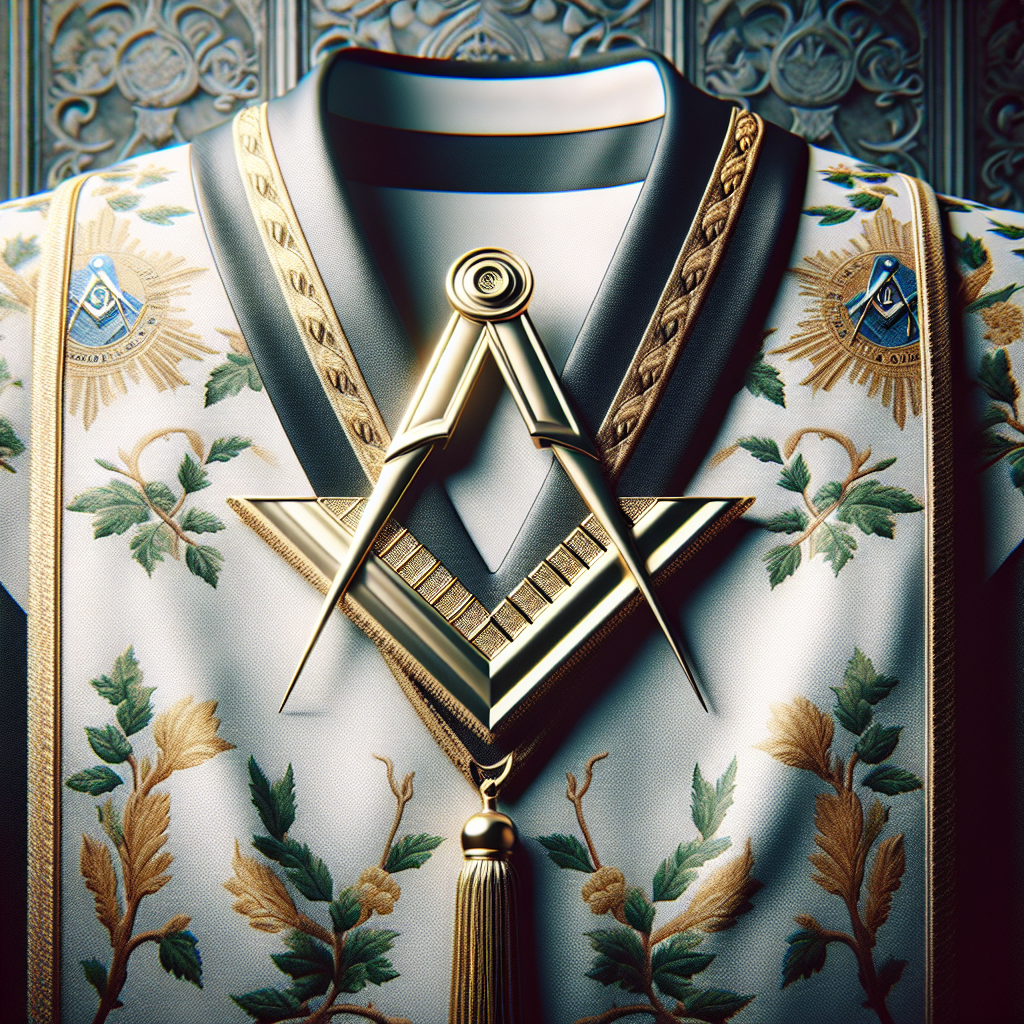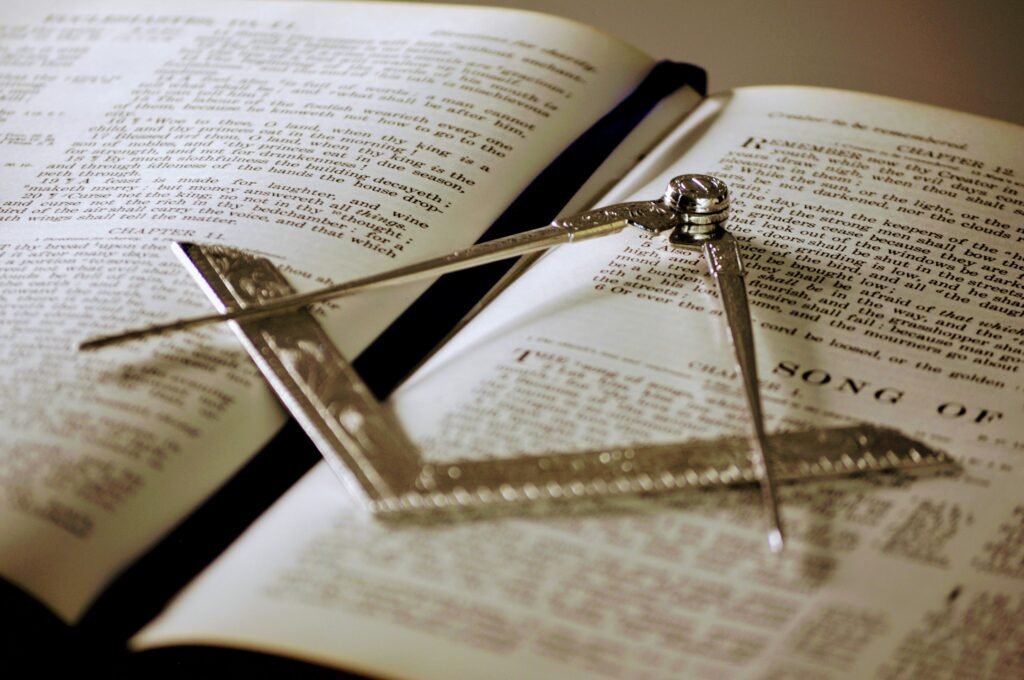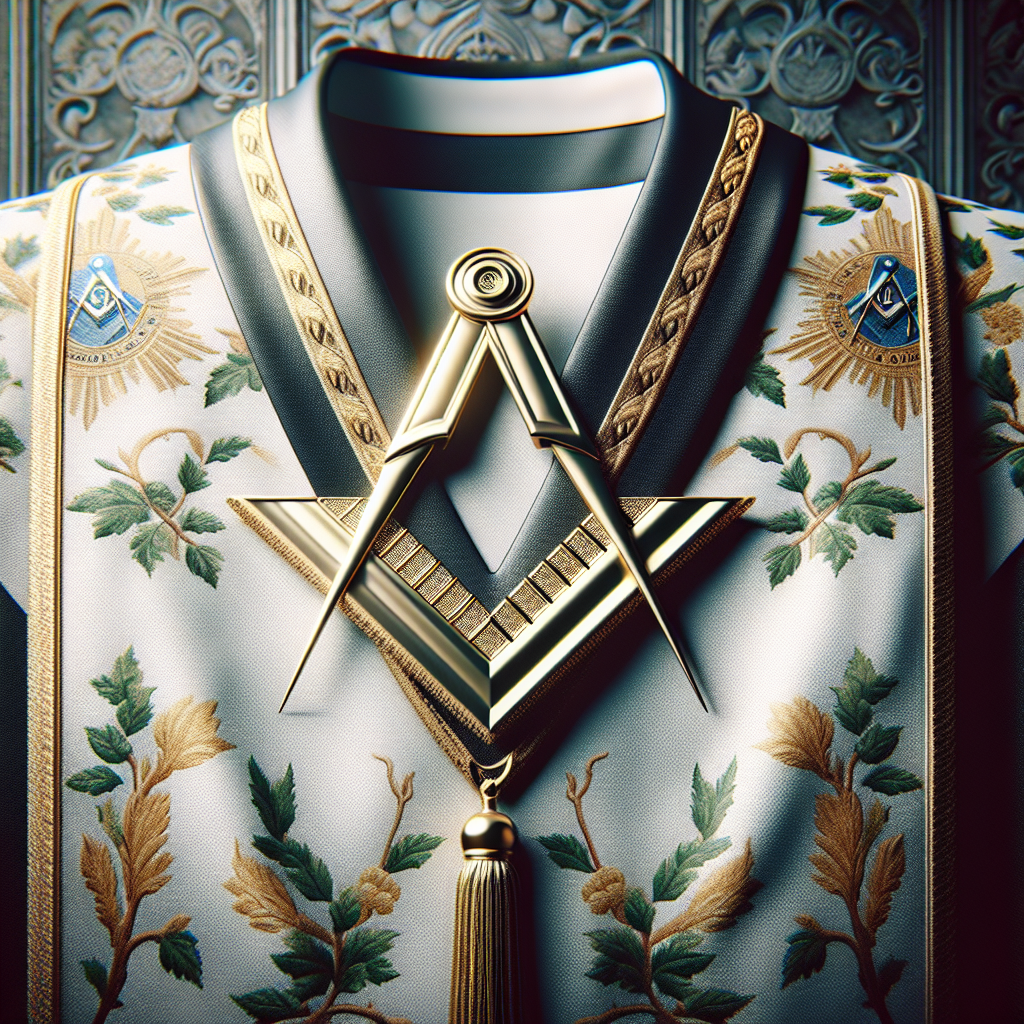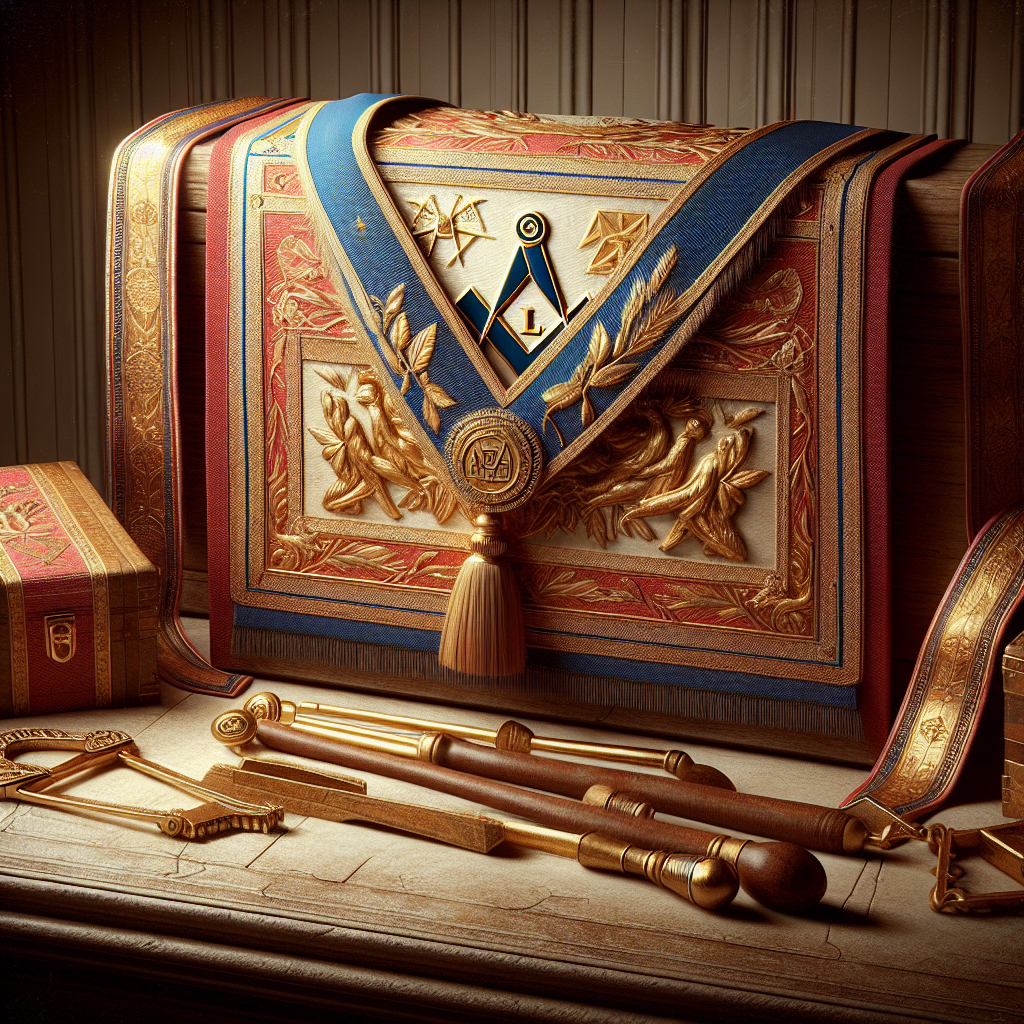
In the fascinating world of Freemasonry, the Scottish Rite stands out with its rich rituals and impactful lessons. This article provides an engaging exploration into the responsibilities of Masons during a Scottish Rite. You will gain insight into the rituals, secret ceremonies and commitments that characterize this particular Masonic journey. From intricate symbols to profound teachings, you’re about to embark on an enlightening journey into the heart of the Scottish Rite’s Masonic practices.

Understanding Scottish Rite Freemasonry
Scottish Rite Freemasonry remains one of the most fascinating and intricate systems of the Masonic community. With its rich history, diverse degree system, and influential symbols and rituals, you’re about to embark on an illuminating journey into this colorful and mysterious world.
Origins of the Scottish Rite
The foundations of the Scottish Rite are deeply rooted in history, tracing back to the 18th century in France. While couched in traditions and rituals from an older era, it isn’t truly Scottish as one might guess from the name. Despite this, it has evolved since its inception, cultivating a unique identity that sets it apart from other Masonic systems.
Differentiation from other Masonic systems
What makes the Scottish Rite distinctive from other Masonic systems is its expansive and elaborate degree system. Beyond the basic three degrees found in Freemasonry (Entered Apprentice, Fellow Craftsman, Master Mason), the Scottish Rite extends further, offering a progression through an additional 29 degrees. It’s a comprehensive nexus of teachings designed to explore moral philosophy, comparative religion, and symbolic ritual.
Significance of the name ‘Scottish Rite’
Despite its title, the Scottish Rite didn’t actually originate in Scotland. The moniker ‘Scottish’ is quite historical and philosophical. It points to perceived origins of higher-degree freemasonry in Scotland and is indicative of a rite that seeks to connect itself with older roots. It is less about geographical roots and more about symbolic and philosophical underpinnings.
Structure and hierarchy within the Scottish Rite
The structure follows the progression of the degrees, with each group of degrees forming a body within the Scottish Rite hierarchy. From the beginning, you would start at the Lodge of Perfection (4th-14th degrees), progressing onwards through the Chapter of Rose Croix (15th-18th degrees), the Council of Kadosh (19th-30th degrees), and culminating at the Consistory of Masters of the Royal Secret (31st and 32nd degrees). At the pinnacle, a select few individuals can achieve the prestigious honorary 33rd degree awarded by the Supreme Council.
Degrees within Scottish Rite Freemasonry
In the Scottish Rite, the degrees are a pathway to deepening understanding and knowledge. The progression from one degree to another is not just a process—it’s a journey of self-discovery and exploration.
The 4th to 14th degrees: The Lodge of Perfection
The journey commences in the Lodge of Perfection, where you progress through the 4th to 14th degrees. This phase of the progression is focused on moral and ethical lessons, emphasizing on virtues like integrity, honesty, and kindness.
The 15th to 18th degrees: The chapter of Rose Croix
When you transition into the Chapter of Rose Croix, from the 15th to 18th degrees, you delve into more philosophical and introspective themes. Lessons are centered around death, resurrection, and the ultimate purpose of life, imparting deeper philosophical insights.
The 19th to 30th degrees: The council of Kadosh
Between the 19th and 30th degrees in the Council of Kadosh, the focus shifts to the chivalric and philosophical. The degrees at this stage are ridden with multiple interpretations, prompting you to contemplate the moral and ethical decisions that define you as a person.
The 31st and 32nd degrees: The Consistory of Masters of the Royal Secret
By the time you reach the Consistory of Masters of the Royal Secret, operating in the 31st and 32nd degrees, you’re expected to synthesize what you’ve learned and apply these lessons to your everyday life. This is the culmination of the preceding journey and creates Masons ready to impart wisdom to others.
The 33rd degree: The Supreme Council
The highest achievable degree in the Scottish Rite is the 33rd degree, conferred on those who have made significant contributions to Masonry, such as exceptional service to the fraternity or to humanity at large. This honorary degree is awarded by the Supreme Council, an administrative body governing the Scottish Rite.
Key Symbols and Rituals in Scottish Rite
Like other Masonic systems, the Scottish Rite uses a plethora of symbols and rituals in its teachings. These are not mere ornamental or ceremonial, each has a meaning and a purpose.
Symbols used in the Scottish Rite
You will encounter numerous symbols in the Scottish Rite. These cover a wide range – Double-headed eagles, Teutonic crosses, the Rose Croix, and the compass and square are only a few examples. Each comes bearing significant metaphorical and philosophical meaning, reflecting the teachings of the rite.
Purpose and understanding of rituals
Rituals hold a special place within the Scottish Rite, serving as learning tools and pathways to personal growth. Freemasonry is a speculative craft, meaning much of what is learned comes through introspection, analysis, and careful consideration of the lessons practiced in the rituals.
Interpretation of the rituals and symbols
With both the rituals and symbols, interpretation is key. They’re designed to provoke introspection and contemplation about the moral, philosophical, and spiritual issues that the Scottish Rite addresses. So you’re encouraged to delve deeper and explore, as every symbol and ritual in the Scottish Rite can have multiple interpretations.
The Role of a Mason in Scottish Rite
Being a Mason in the Scottish Rite is about more than simply attending meetings or reaching degrees. You are expected to contribute to both the Masonic community and society at large, embodying the moral and philosophical teachings of the rite in your everyday life.
Responsibilities and expected behavior
You are expected to behave according to a specific code of conduct, which includes treating others with respect, living with integrity, and striving for intellectual growth. Additional responsibilities include maintaining the secrecy of their rituals, attending meetings, and being an active, supportive member within their lodge.
Participation in meetings and events
Participation and attendance at lodge meetings and events is a key component of your role. These gatherings provide opportunities for fellowship, learning, and carrying out the key rituals of the Scottish Rite. Beyond mere attendance, active participation is also important as it contributes to your personal growth and the overall strength of the lodge community.
Contributing to the lodge community
Your role as a Scottish Rite Mason extends beyond yourself; you are part of a collective—a community. As such, you are expected to contribute to the welfare of your lodge Brothers, assist in their progress, and contribute your skills and knowledge for the benefit of the Lodge.
Engaging in charitable works
Charitable work is a hallmark of Freemasonry, including the Scottish Rite. From scholarships, donating time or resources to those in need, Masons are expected to contribute to their communities and society at large.

The Initiation Process in the Scottish Rite
Becoming a Scottish Rite Mason requires a specific initiation process. The candidate must already be a Master Mason in good standing in a regular lodge.
The application and investigation process
The initiation into the Scottish Rite process kicks off with an application that leads to an investigation process to ascertain your qualifications and character. This process is designed to ensure that only individuals who are morally and ethically fit to join the fraternity are selected.
The initiation ceremony
Upon successful completion of the investigation process, you’ll be initiated into the Scottish Rite during a ritualistic ceremony. This ceremony serves to specifically welcome you into the Scottish Rite and marks the beginning of your new journey of personal and fraternal evolution.
The process of progressing through the degrees
Once you’re initiated, you can then progress through the various degrees. Each one of these degrees is associated with a ritual where you learn moral, philosophical, and/or social lessons. Progression is usually at your own pace and depends largely on your capability and willingness to absorb, comprehend, and practice the teachings within your own life.
Education and Learning in Scottish Rite
Education and personal development lie at the heart of the Scottish Rite Masonic experience. Freemasonry often appeals to those who strive to better themselves and their communities. The Scottish Rite places great emphasis on self-improvement through education and learning, offering various resources and mentorships to this end.
The importance of self-improvement
Scottish Rite is a journey of constant learning and growth, with a strong emphasis on self-improvement. The fraternity encourages you to continually strive for greater knowledge and understanding, both from the many teachings of the Rite and through personal contemplation and development.
Educational resources provided by the Lodge
The Lodge provides a range of educational resources to aid your learning. From ceremonies, instructional books, to formal education programs and study groups, you are not left to your own devices but are supported in your quest to broaden your understanding of the tenets and teachings.
The role of mentorship in learning
Mentorship plays a significant role in the process of learning within the Scottish Rite. More seasoned or knowledgeable members often act as mentors to newer members, guiding them through the degrees and rituals and offering insights into the lessons and interpretations thereof.
Learning the symbolism and history of Masonry
An important part of your education as a Scottish Rite Mason is understanding the symbolism and history of Freemasonry. The fraternity encourages a deep understanding of the symbology used in the rituals and the relevant historical context surrounding these symbols and Masonic tradition.

Scottish Rite’s Influence on Society
Unlike some other fraternal organizations, Freemasonry—especially the Scottish Rite—is not isolated from the outside world. The Scottish Rite has had a profound influence on society, both historically and today.
Historical and cultural impact
Over the centuries, Scottish Rite Freemasonry has influenced various aspects of culture and history. Many famous figures and key events in history are connected to Masonry, from Mozart’s masonic-inspired operas to influential Masonic political leaders who shaped our world.
Charitable works and community involvement
Scottish Rite Masons are greatly encouraged to be active players in their community. The fraternity organizes and contributes towards a multitude of charitable initiatives, supporting education, healthcare, and many other causes.
Notable members and their contributions
The Scottish Rite has seen some high-profile members in its time, including presidents, businessmen, and entertainers, who have used their influence to make meaningful contributions to society.
Controversies and Misconceptions Surrounding Scottish Rite
Like any organization with a long history and complex structure, Scottish Rite Freemasonry has been subject to controversy and misconceptions. This has ranged from conspiracy theories to misinterpretations of the fraternity’s purpose and actions.
Common myths and misconceptions
Common misconceptions about Scottish Rite Freemasonry often revolve around its secretive nature, with some speculating on political or nefarious influences. Another myth is that Freemasonry is a religion when it merely insists on a belief in a Supreme Being without prescribing any particular religious faith.
Controversies and criticisms
Over the years, Scottish Rite Masonry has faced criticism and controversy for its secretive rites, perceived exclusivity, and male-only membership. While some of these criticisms have led to changes and reformations, others continue to be contentious issues.
The Masonic response to controversy and criticism
In response to these controversies and criticisms, Masonic organizations have taken steps to educate the public about the true nature of Freemasonry. However, some aspects such as the secretive nature of the Lodge’s rituals and degrees are inherent to the Rite and are unlikely to change.

Interrelation between Scottish Rite and other Masonic Bodies
The Scottish Rite holds a unique place within the larger Masonic community. It interacts with other Masonic bodies while maintaining its own unique character and teachings.
Relationship with Blue Lodge Masonry
Scottish Rite has a close relationship with Blue Lodge Masonry (Craft Lodge), as it requires all its members to have attained the rank of Master Mason within the Blue Lodge. While it provides an additional and varied set of degrees, it does not supersede or replace Blue Lodge Masonry.
Interactions with other appendant bodies
The Scottish Rite is an appendant body of Freemasonry, meaning it is an extension beyond the Blue Lodge. It interacts with other appendant bodies but operates independently, with its own application process, hierarchy, and rituals.
Reciprocity and recognition between Masonic organizations
While Masonic organizations function independently, there’s a level of reciprocity and recognition between them. A Mason is typically honored and respected across lodges and rights, underlining the overarching sense of unity within Freemasonry.
Future of Scottish Rite Freemasonry
Even in modern times, the Scottish Rite continues to prove its relevance and adaptability, consistently evolving while upholding its fundamental traditions and rituals.
Modern challenges and opportunities
Just like other organizations, the Scottish Rite faces several challenges in a rapidly changing world. However, it also poses unique opportunities for the fraternity’s growth, forcing the Scottish Rite to become more open and inclusive while questioning and refining its traditional practices.
Role of technology in Freemasonry
With advancements in tech, the Scottish Rite, like many other organizations, is exploring how to leverage technology for its benefit. This ranges from digitalizing resources for easy accessibility to utilizing platforms for virtual meetings, enabling broader participation and engagement.
Changes and adaptations to traditional practices
The Scottish Rite has shown a willingness to adapt and evolve certain practices to respond to modern needs. While core traditions and teachings remain untouched, changes to ceremonial practices and communication channels to accommodate modern lifestyle are evident.
The future of Scottish Rite on a global perspective
Globally, the Scottish Rite continues to be a significant part of Freemasonry. Its commitment to the principles of morality, justice, and self-improvement continues to draw people, promising a future of growing membership and influence.













